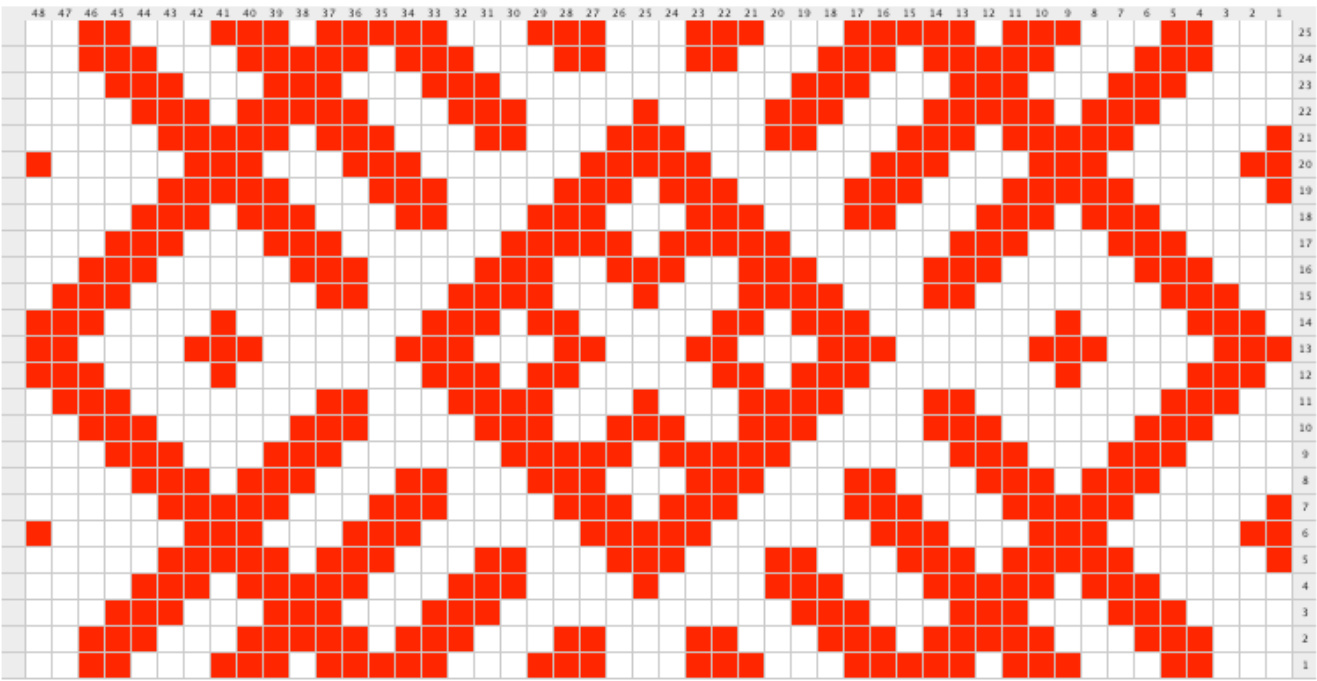A motif from Komi Patterned Knitting: Variations on a theme
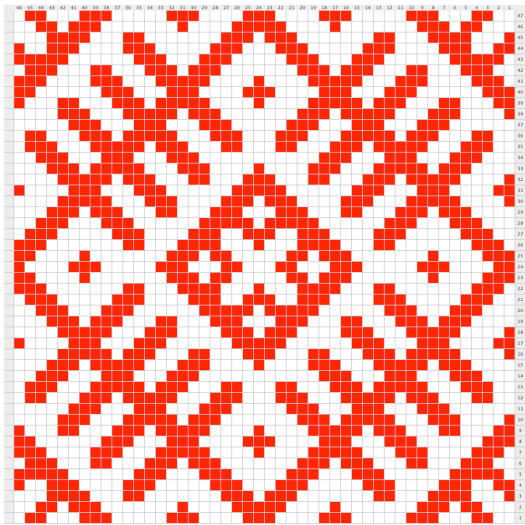
Several years ago, I sent a pattern correction to a publisher. Two days later, they emailed me to offer me a choice of books from their list! I chose Charlene Schurch's Mostly Mittens, a book about the traditional knitting of the Komi people of Russia. When the Camden Conference selected "Russia Resurgent" as the 2015 topic, I suggested to one of the organizers of our community events that I offer a workshop on this knitting style. I picked one motif from Komi Patterned Knitting by Galina Nikolaevna Klimova, the main source material for Schurch's book, and charted it. Then I excerpted sections to include in a hat, a headband, and cuffs. The cuffs can be used as a test swatch for knitting colorworkintheround. One of the benefits of the headband is that it's quite quick knitting. There's no shaping, just ribbing and a section of stranded knitting in the round. The hat is a little more complicated as the crown is shaped with decreases. The hat is cast on at the cuff and worked in the round from cuff to crown. Two colors are used, a third for contrast is optional. The headband and cuffs are also worked in the round, beginning and ending with ribbing. I used a variety of worsted weight wool yarns for my samples. The gauge varied slightly from 4.5 to 5 stitches to the inch.
Komi Patterned Headband
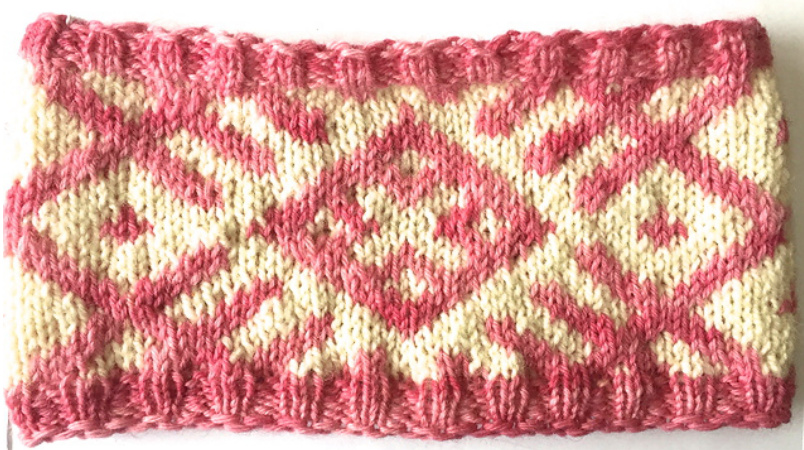
Skills required
- Knit & purl, cast on & bind off
- Working in the round on circular or double point needles. or -Working small circumferences in the round on DPNs/with magic loop/with two circulars -Working from a chart -Stranded color work
Yarn
Any yarn that knits at approximately 4.5 to 5 stitches per inch. Pattern can be completed with 2 colors or a 3rd color can be added for accent.
Sample used:
MC: Briggs & Little Regal, off white, (100% wool, 272 yards / 113 grams) CC: Araucania Nature Wool Solids, Rose 42 (100% wool, 242 yards / 100 grams skein) Sample used approximately 22 grams of MC and 15 grams of CC.
Needles
3.75mm/US 5 (for ribbing) needles for working in the round: DPNs, 1 long circular or 2 short circulars (It is not critical to use smaller needles for ribbing) 4.0mm/US 6 needles for working in the round: DPNs, 1 long circular or 2 short circulars
Gauge
ounds rows = 4 inches square in stranded color work on larger needles Sizes One size
Finished Measurements
Circumference: 20 inches Height: 4.5 inches
Abbreviations, special techniques, resources
- K: knit - P: purl - Inc: increase. I prefer the backwards loop increase, shown at www.knittinghelp.com as Make1 away. - K2tog - knit 2 together. This is a right leaning decrease.You may substitute a left leaning decrease if you prefer. The slant is not significant for this pattern. - CDD - centered double decrease. Slip 2 together as if they are one stitch, knit 1, pass both slipped stitches over the knit stitch. (only used for hat variation) - Cast on: Latvian/Estonian Open Closed cast on. Tutorial at Helen Griffin's website. It is listed under Cast ons worked in Ribbing. - Bind off: Joyce Williams' sewn Latvian Cast off, from Latvian Dreams. Tutorial at Helen Griffin's website.
Resources
Increases: http://www.knittinghelp.com/videos/increases Cast on: https://sites.google.com/site/oftroysgoldenapples/home/tutorials/castOns#Double Bind off: https://sites.google.com/site/oftroysgoldenapples/home/tutorials/cast-ons/ basic-bind-off-s#sewn Color dominance: Beth Brown-Reinsel's blog, Knitting Traditions, http:// www.knittingtraditions.com/uncategorized/2010/03/yarn-dominance/ Pattern generators: http://www.thedietdiary.com/knittingfiend/index.html Two handed stranded knitting: https://www.philosopherswool.com/Pages/ Twohandedvideo.htm I don't trap every stitch as demonstrated here.
Pattern Notes
Color dominance
In two color knitting, one strand will appear on the back to be below the other strand. The strand that lies below will appear slightly more dominant on the face of the fabric. Usually, the strand that is held furthest to the left will be dominant. See Beth BrownReinsel's blog, Knitting Traditions, http://www.knittingtraditions.com/uncategorized/ 2010/03/yarn-dominance/, for more discussion of this issue. For the most part, hold the background yarn to the right, the pattern yarn to the left. Remember which you have held where.
Tips for adjusting size
- Go up or down a needle size. - Add or remove a multiple of a small motif. This works best with 4 or 8 stitch motifs. - Add or remove stitches from the edges of the chart. The full chart is 46 stitches. Each stitch added to one side of the motif will increase the hat by 2 stitches, just under 1/2 inch. It is easiest to keep the ribbing in multiples of 4 (88, 92, 96) and add extra stitches in the first round after the ribbing. It is easiest to add columns of a single color. Although this will interrupt the flow of the design around the piece, it will make its own pattern.
Turn it into a hat
Divide into 8 sections. If the stitch count is not evenly divisible by 8, decrease as evenly as possible on the last round of the chart. You'll need a taller band, between 6 and 7 inches from the cast on. The pattern generator at the Knitting Fiend is useful. Using a centered double decrease, decrease at 8 evenly spaced points. Decrease every 4th round until you have 8 stitches left. Break yarn, thread through remaining stitches and secure.
Pattern Instructions
Using 3.75mm/US 5 needles and CC yarn, CO 96. Knit in K2, P2 ribbing for 1/2 inch. Change to larger needles, if necessary. Change to MC. Knit 1 round. Adjust stitch count by increasing stitches to fit desired chart. Charts A, B and C: repeat is 8 stitches, no increases or decreases required. Chart D: repeat is 23 stitches, decrease 4 stitches. (K22, k2tog,) repeat. Chart E: repeat is 48 stitches, no increases or decreases required. Knit in two color stranded knitting following desired chart. Note that Chart A is only 10 rounds. If you want to use only chart A, repeat all the rows twice and increase the ribbing to 3/4 inch. On last round before ribbing, switch to CC color yarn, knit 1 round. If you have a large head, do not switch to smaller needles. This will give a slight taper to the headband. Knit in K2, P2 ribbing for 1/2 inch. Bind off.
Finishing
Soak in water. I generally wash my knits in wool wash. Block. Put your two hands inside the hat and snap your hands apart a couple of times. This doesn't have to be gentle. You want to help the strands even out and settle into place. Pat into shape on a towel and leave to dry. Weave in ends.
Sources
Mostly Mittens: Ethnic Knitting Designs from Russia, Charlene Schurch, 2009. Martingale. This is a republication of Mostly Mittens: Traditional Knitting Patterns from Russia's Komi People, 1998. y3opHoe BA3aHne koMn Uzonie Viazanie Komi (Komi Patterned Knitting), Galina Nikolaevna Klimova. 1978. I viewed images only. TeKCTHSbHblv opHaMeHT KoMN, Textili Ornament Komi (Komi Textile Ornament, Galina Nikokaevna Klimova. 1984. Images. Contact Information Designer name: Helen Darmara http://www.ravelry.com/designers/helen-darmara hcdarmara @roadrunner.com Version 1, 01/2015 Basic Pattern Template Kate Atherley, 2014 A, multiple of 8, two repeats. Note that rows 2-4 have a 4 stitch repeat
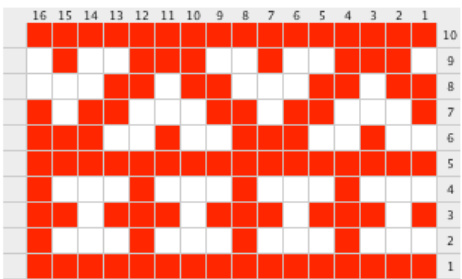
Chart B, multiple of 8, 4 repeats. Easy to expand vertically. As shown, 24 rnds
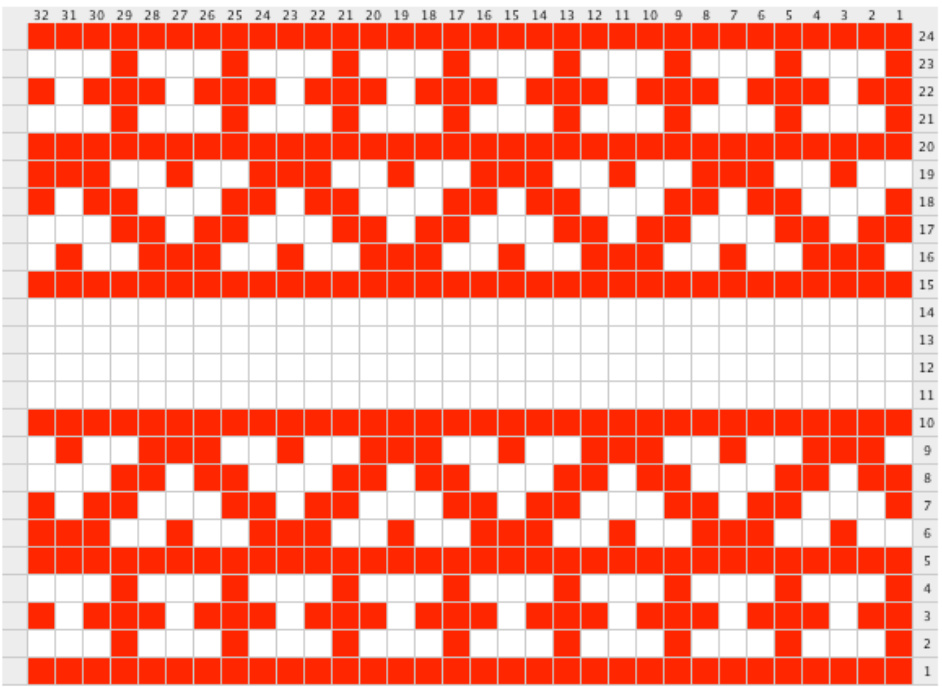
Chart C, multiple of 8, 4 repeats. As shown, 19 rounds. Increase height by adding CC color rounds before and after ribbing.
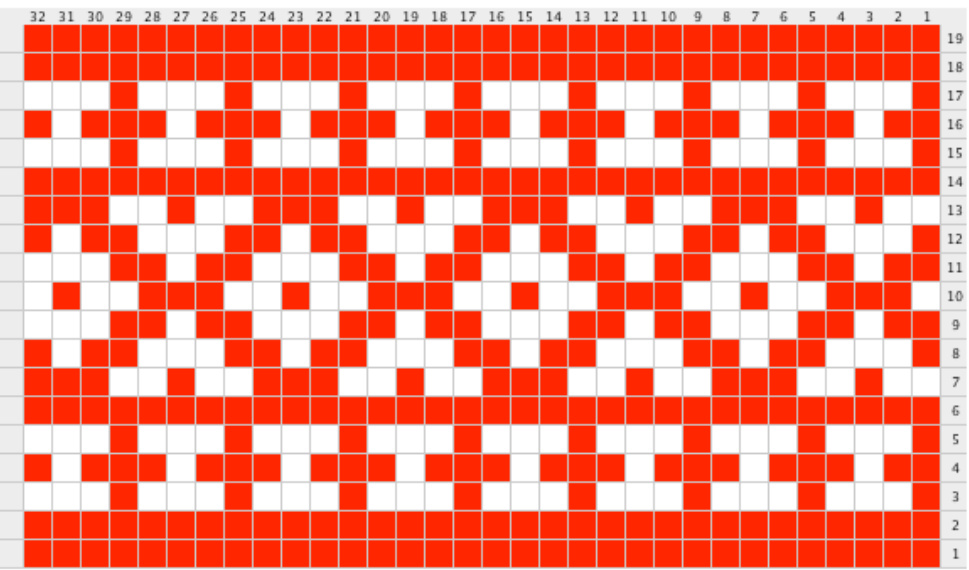
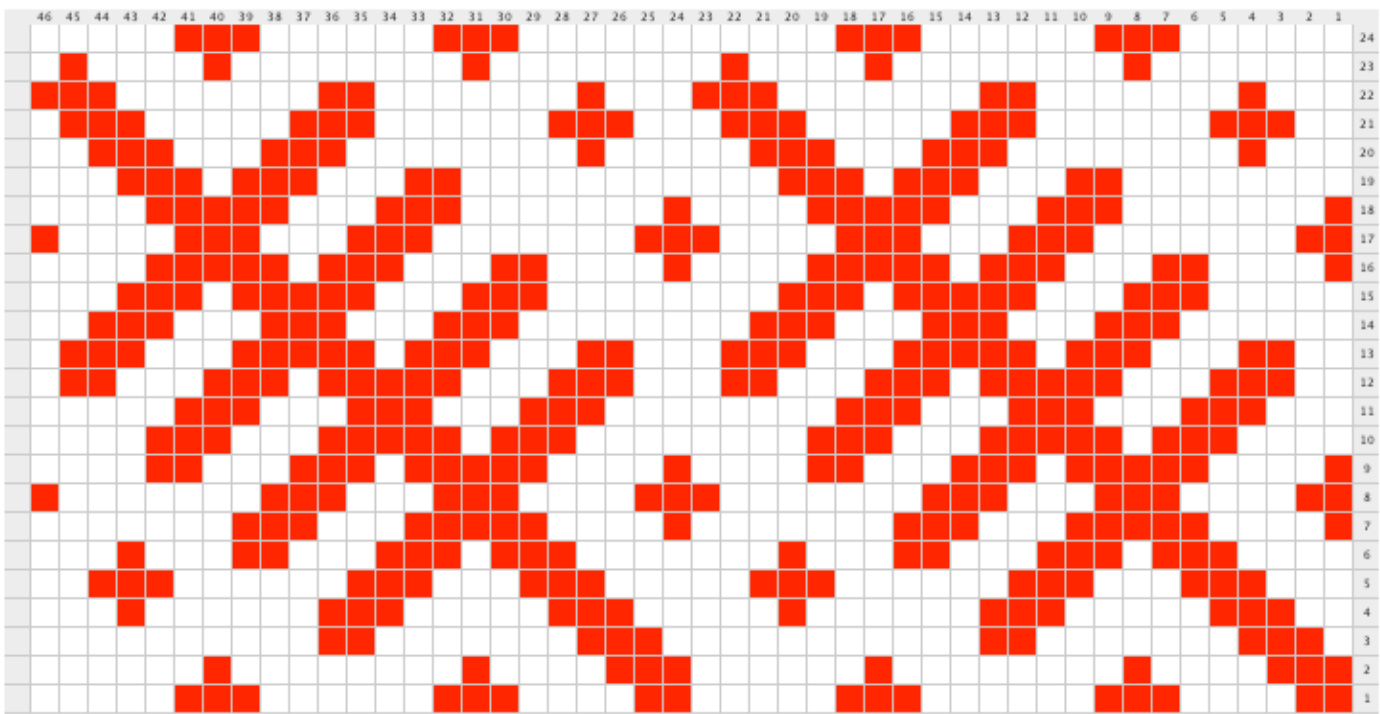
Chart D, multiple of 23, 2 repeats. 24 rnds
Chart E, multiple of 48, 1 repeat. 25 rnds.
